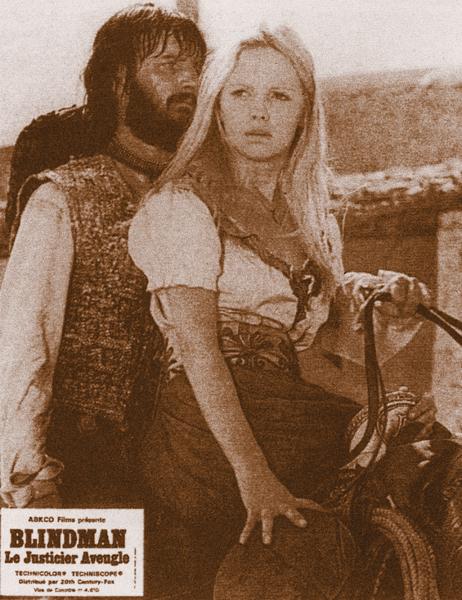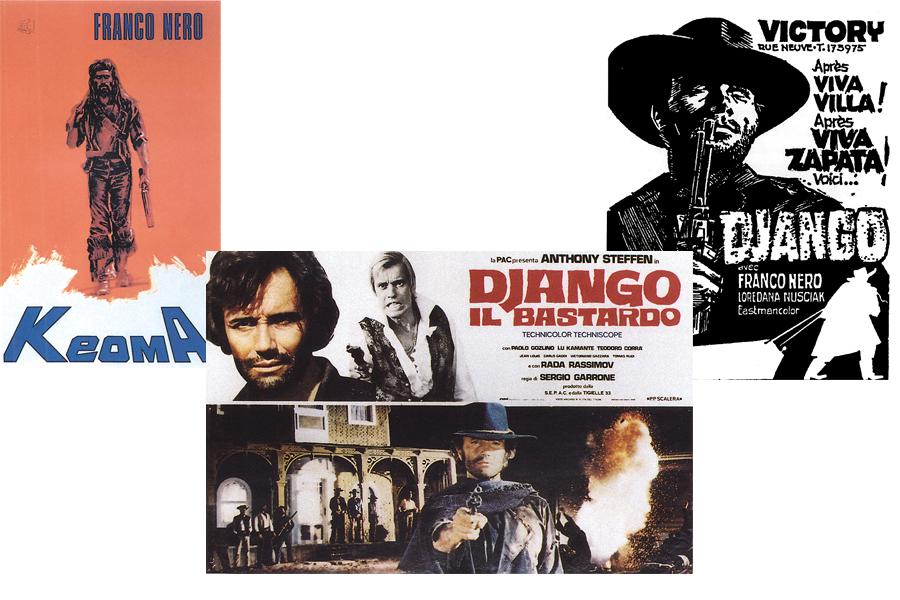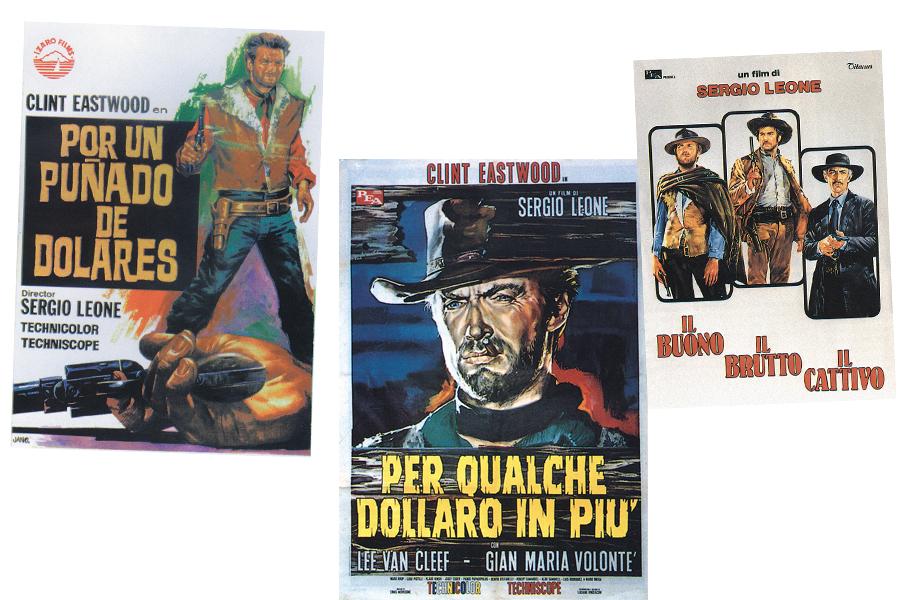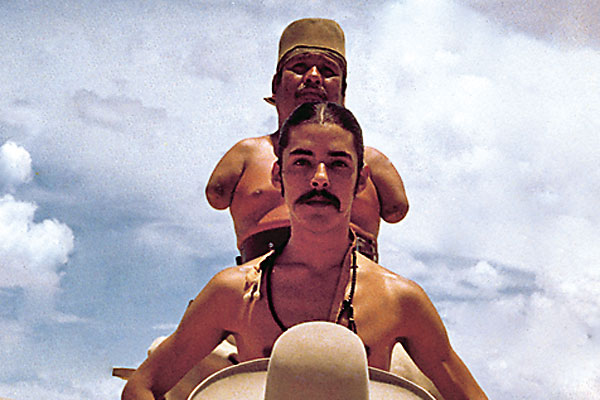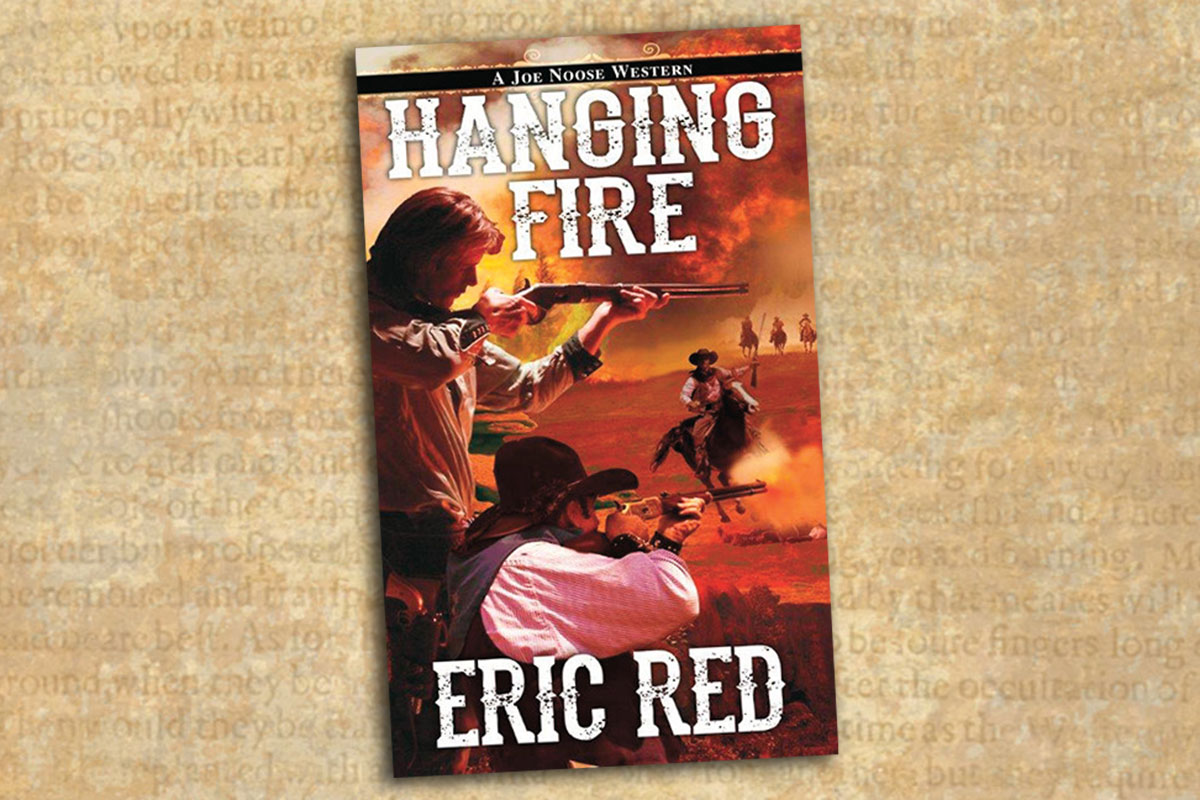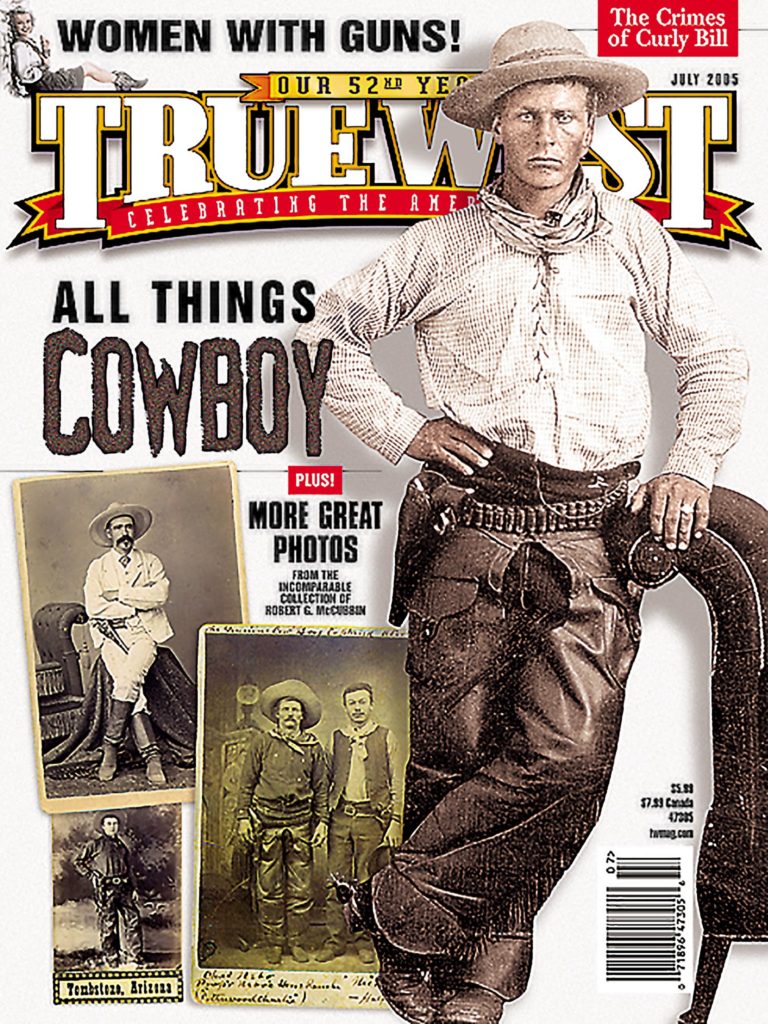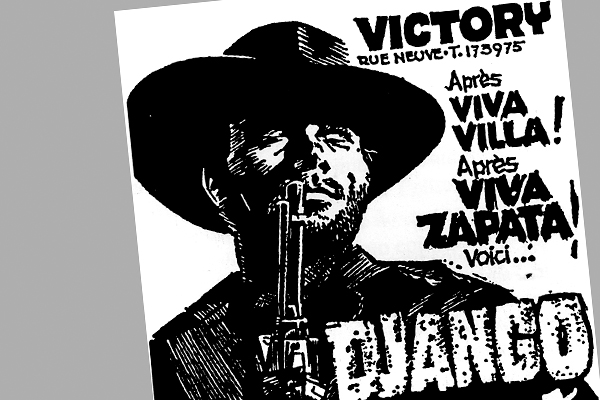 A bit of mystery surrounds the once popular genre of films, indelicately called Spaghetti Westerns during their heyday.
A bit of mystery surrounds the once popular genre of films, indelicately called Spaghetti Westerns during their heyday.
For many years, a trilogy of films starring Clint Eastwood and directed by Sergio Leone were considered among the first of a new breed of Western. The first of these, A Fistful of Dollars, was like the noted horror film Halloween. Fistful became the model for hundreds of Italian Westerns. Halloween became the grandparent of a never-ending string of boogey man movies.
Other aficionados of the genre feel that Gunfight at Red Sands, starring Richard Harrison and released in 1962 (predating Fistful by two years), was one of the first, if not the first Spaghetti Western.
The plot of Spaghetti Westerns follows a laconic, dry humored, semi-good guy up against an endless stream of sociopathic bad guys, led by a really, really bad guy. After a few gunfights, a beating and possibly a bedding, the semi-good guy gets the gold, usually with the help of a wizened old man who admires his spunk and semi-goodness. Endlessly duplicated, ripped-off and redone with the same theme by countless directors, Fistful was itself a remake of the famous Japanese film Yojimbo.
Experiencing a huge amount of success in Europe, and to a lesser degree in the United States, during the 1960s and early ’70s, the Spaghetti Western parodied itself into oblivion around 1975. All told, between 600-800 films were made that included the Euro-Western theme. With the advent of DVDs, fans of the genre now find themselves in hogleg heaven.
Although there has always been a cult following for these films, the steady stream of Spaghettis currently being released on DVD has revived this moribund genre.
Amazon.com offers numerous Spaghetti Western titles, and eBayers can select from any number of discs. Specialty suppliers, such as Euro Trash Cinema, Wild East and Video Search of Miami, also have titles listed that were not available before the advent of DVDs. Outstanding films such as The Great Silence, Texas Adios and Keoma are readily accessible.
DVDs have become cash cows for movie studios, and it follows that there is a lot of cash made from dusting off films that are of interest to collectors and cinephiles.
This interest has also brought out what purists call the real version of European Westerns, those that do not have an American actor playing the lead character.
Although some of those films have been released on video over the years, it was usually the more popular films or those starring American actors (temporary ex-pats trying to cash in on the craze or to pump new life into a fading career) that were obtainable.
Eastwood is certainly the best known American to don an unforgettable outfit that included a serape, sheepskin and leather vest (director Leone, somewhat unaware of the history of the American West, originally had some of his extras wearing coonskin caps).
Other well known and barely known American actors also made the trek. Among them: Guy Madison, the former TV star on Adventures of Wild Bill Hickok. Craig Hill, who appeared on TV?for several years in the 1950s’ Whirlybirds. Joseph Cotten, perhaps sinking to a low point in his career, after once starring with Orson Welles in Citizen Kane. Edd Byrnes, another TV escapee, who could never shake his “lend me your comb” image from the 77 Sunset Strip series. John Ireland, costar of the Duke’s Red River, made 10 pasta oaters. John Philip Law launched his acting career in Death Rides a Horse, costarring Lee Van Cleef, who was in 15 Italian Westerns. Not to mention Telly Savalas, Chuck Connors, Peter Graves, James Coburn and Sue Lyon (Lolita). Even Ringo Starr tried to become a straight shooter when he costarred in the 1971 epic Blindman.
One of the more interesting and tragic American actors to appear in European-made Westerns was Dean Reed. On IMDB.com, writer Jennifer Dunbar Dorn, who is writing a biography about Reed, is quoted as saying:
“Reed’s mysterious death in 1986 still has fans scratching their heads. At one time, he was an actor and minor rock star in the United States. He went to Hollywood where he signed a record contract with Capitol Records in 1958, but his third single, ‘Our Summer Romance’ was so popular in South America he went to tour there. More popular than Elvis Presley, he stayed to enjoy his incredible fame in Chile, Peru, and Argentina. He made albums, starred in movies and had his own television show in Buenos Aires. He was deported from Argentina in 1966 and ended up in Rome, where he made ‘spaghetti westerns’ (Adios, Sabata; Winchester Does Not Forgive) for several years. He made his first concert tour of the Soviet Union in 1966 and became a mega star there and in Eastern Europe. His last visit to the States in late 1985 encouraged him to dream of making a career for himself back home, especially if he could return with his current project in hand, a movie about the war between AIM (American Indian Movement) and the FBI at Wounded Knee, 1973. Just days before shooting was due to start in the Crimea, Dean Reed’s body was found in the lake near his home outside of East Berlin. He had been missing for several days. Many close to him suspected suicide; his family and friends in America believed he was murdered.”
An American director who loves to capitalize on tragedies, such as Reed’s, is Quentin Tarantino, who catapulted to fame with his films Reservoir Dogs and Pulp Fiction. Tarantino is a huge fan of the Spaghetti and often “borrows” various pieces to enhance his films. In Kill Bill I and II, it was noted that several Spaghettis, such as Adios, Sabata (with Yul Brynner, 1970), Death Rides a Horse (with Van Cleef, 1968) and Hellbenders (with Cotten, 1966) had slight homage paid to them by Tarantino. He also used clips of the soundtrack from The Good, the Bad and the Ugly.
Music played an important part for Spaghettis, and a good soundtrack was a must. A minor revival of these has also taken place with stores, such as Footlight Music in New York, carrying a number of soundtracks complete with bells, whistlers and an odd twang of guitar or Jew’s harp.
Although Tarantino’s upcoming film Hell Ride has a decidedly Spaghetti title, it is described as a “Spaghetti biker” film, which will star Tarantino, Larry Bishop and Michael Madsen. In a recent interview, Tarantino noted that he would love to make a Spaghetti-type Western, but due to other commitments, he does not have the time to do so—yet.
So, maybe it will be up to a new breed of filmmakers to start writing and directing the Spaghetti New Wave.
Who knows, it could be a remake of I Came, I Saw, I Shot that someday tomb-stones Tombstone and other top Western grossers at the box office.
Alan C. Huffines has authored books and articles, and he has advised on several historical films. Most recently, he served as military advisor for The Alamo (2004).
Photo Gallery
Inspired by the Japanese blind Samurai film series Zatoichi, Director Ferdinando Baldi’s Blindman is about a blind gunfighter (played by Tony Anthony, shown at right) who is asked to escort 50 mail-order brides to Texas. Ex-Beatle Ringo Starr played a Mexican bandit in the film.
When the movie was released in 1971, American critics panned it, yet the film was quite successful overseas. When it was rereleased for a third time, Anthony personified the movie as “just like an animal, which refuses to die.” Anthony and Baldi went on to make a 3-D “loose” remake of Blindman in 1981: Comin’ at Ya. Baldi’s Blindman makes us wonder if it inspired Robert Rodriguez’s blind shootist (played by Johnny Depp) in Once Upon a Time in Mexico.
Sergio Corbucci’s 1966 film Django changed the tone of the Western. Instead of a whistling cowboy riding up on his white horse, Django (played by Franco Nero) is on foot, dragging a coffin in the mud (top right).
Nero was so popular as Django that when he appeared in Enzo Castellari’s 1976 film Keoma (top left), the film was released in the U.S. as Django Rides Again and Django’s Great Return. Critics insist there are differences between the Keoma and Django characters, most notably Keoma is not running away from himself, nor is he indifferent to those around him. Anchor Bay paid tribute to Castellari’s true vision when its U.S. release of the 2001 Special Edition DVD reverted to the film’s original title of Keoma.
Filmmakers who purposely cashed in on the Django name include León Klimovsky, in his 1966 A Few Dollars for Django; Guilio Questi, in his 1967 Django Kill (If You Live, Shoot); Ferdinando Baldi, in his 1968 Django, Prepare a Coffin; and Sergio Garrone, in his 1969 Django the Bastard (bottom). The only Django sequel endorsed by Corbucci, however, is his 1987 release Django 2.
Clint Eastwood was an unknown before Sergio Leone cast him as the Man with No Name in his Dollar Trilogy: A Fistful of Dollars (above); For a Few Dollars More (top right); and The Good, the Bad and the Ugly (right; at the end of this movie, Eastwood’s character gets his trademark serape from a dying soldier). Eastwood would later dedicate his Academy Award-winning film, The Unforgiven, to Leone.
The No Name character did have a name in all three movies: he was Joe in Fistful of Dollars; Manco (meaning crippled in Italian and Spanish) in Few Dollars More; and Blondie in Good, Bad and Ugly. Does this make Clint Eastwood’s character’s name Joe “Blondie” Manco?
– All images courtesy Jeff Berg –


